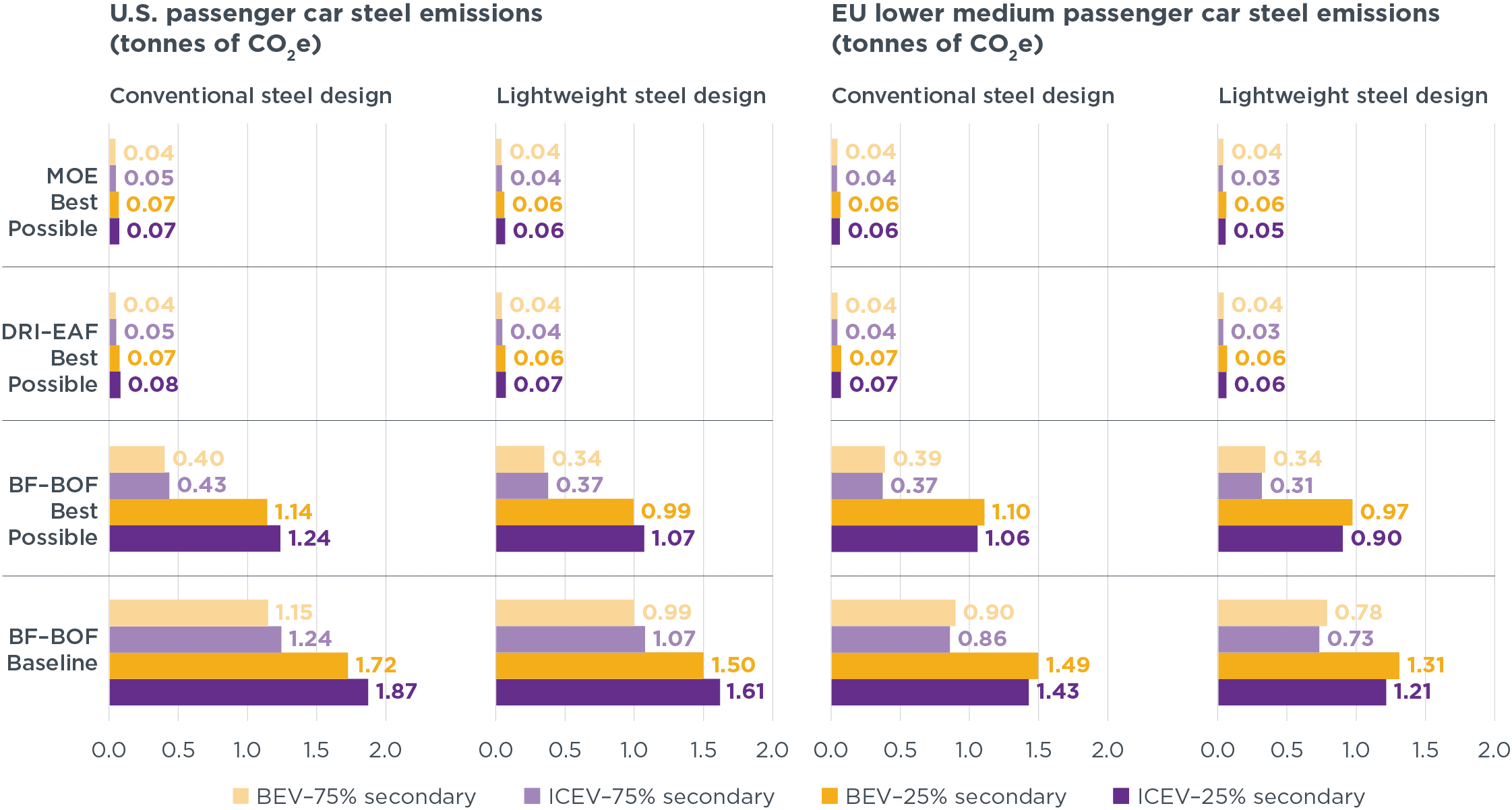Report
Technologies to reduce greenhouse gas emissions from automotive steel in the United States and the European Union
Most of the greenhouse gas emissions from the lifetime of vehicles comes from burning gasoline and diesel. But vehicle manufacturing also generates significant emissions. As the world transitions to electric vehicles powered by an increasingly decarbonized grid, these manufacturing or embodied emissions grow in importance. To achieve a fully net zero GHG transportation sector by 2050, it will be necessary to drastically reduce the embodied emissions in key materials like steel and batteries.
Steel manufacturing is one of the most energy and emission intensive industries worldwide, relying heavily on fossil fuels, especially coal, in primary production. In vehicle manufacturing, steel is the most used material by mass, typically making up between 50% and 66% of the vehicle, depending on the model, segment, and powertrain type.
Given the automotive industry’s substantial steel consumption, automakers may be uniquely suited to drive demand for fossil fuel-free steel and influence the steel industry transition away from coal-based steel production.
This analysis examines the ability of automotive industries in the United States and the European Union to reduce GHG emissions of automotive steel through:
- Discussing current steel production pathways and associated GHG emissions
- Describing pathways to produce fossil fuel-free steel
- Exploring other modes to reduce steel demand in vehicles
- Comparing GHG emission reduction potential for internal combustion engine vehicles (ICEVs) and battery electric vehicles (BEVs) in the United States and the European Union
- Summarizing the other aspects necessary for the transition to green steel
Figure. U.S. and EU steel-only vehicle manufacturing GHG emissions for internal combustion engine and battery electric vehicles by steel production pathway

Note: Production pathways are Baseline blast furnace-basic oxygen furnace (BF-BOF) in 2022; Best Possible scenario of BF-BOF with renewable electricity and more efficient technologies; best possible direct reduced iron (DRI) + electric arc furnace (EAF) which uses green hydrogen and renewable electricity; and best possible molten oxide electrolysis (MOE) using renewable electricity.
The research arrives at the following key results:
- The auto industry can eliminate more than 95% of greenhouse gas emissions from producing steel for passenger vehicles by switching to fossil fuel-free steel. Doing so would reduce overall vehicle manufacturing emissions by up to 27%.
- Using fossil fuel-free steel in vehicle production increases cost by $100–$200, or less than 1% of the price of an average new vehicle
- Fossil fuel-free primary steel production technologies already exist, and production capacity can increase, but not without commitments from buyers.